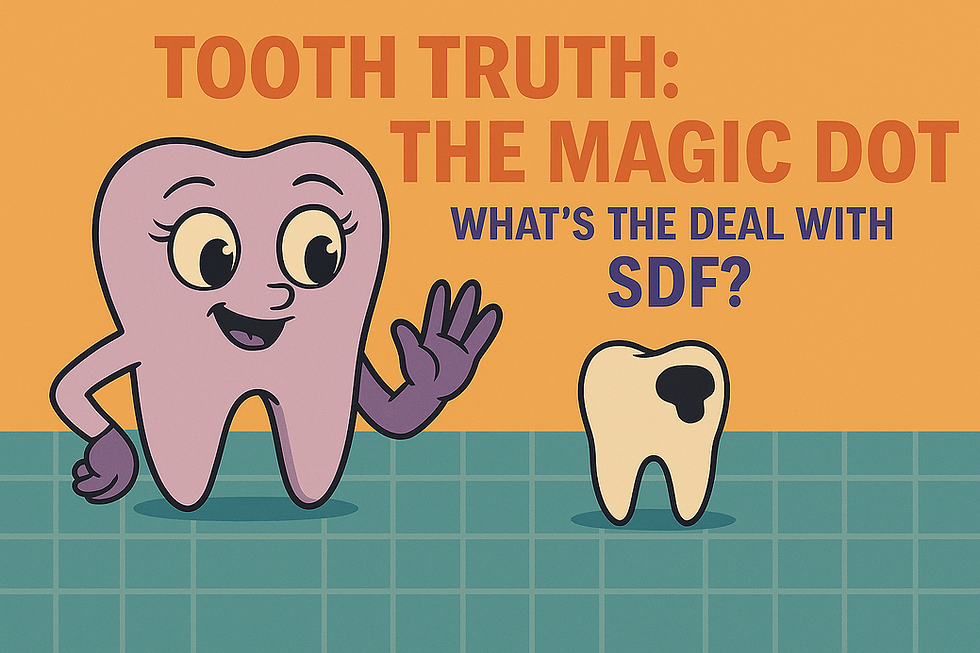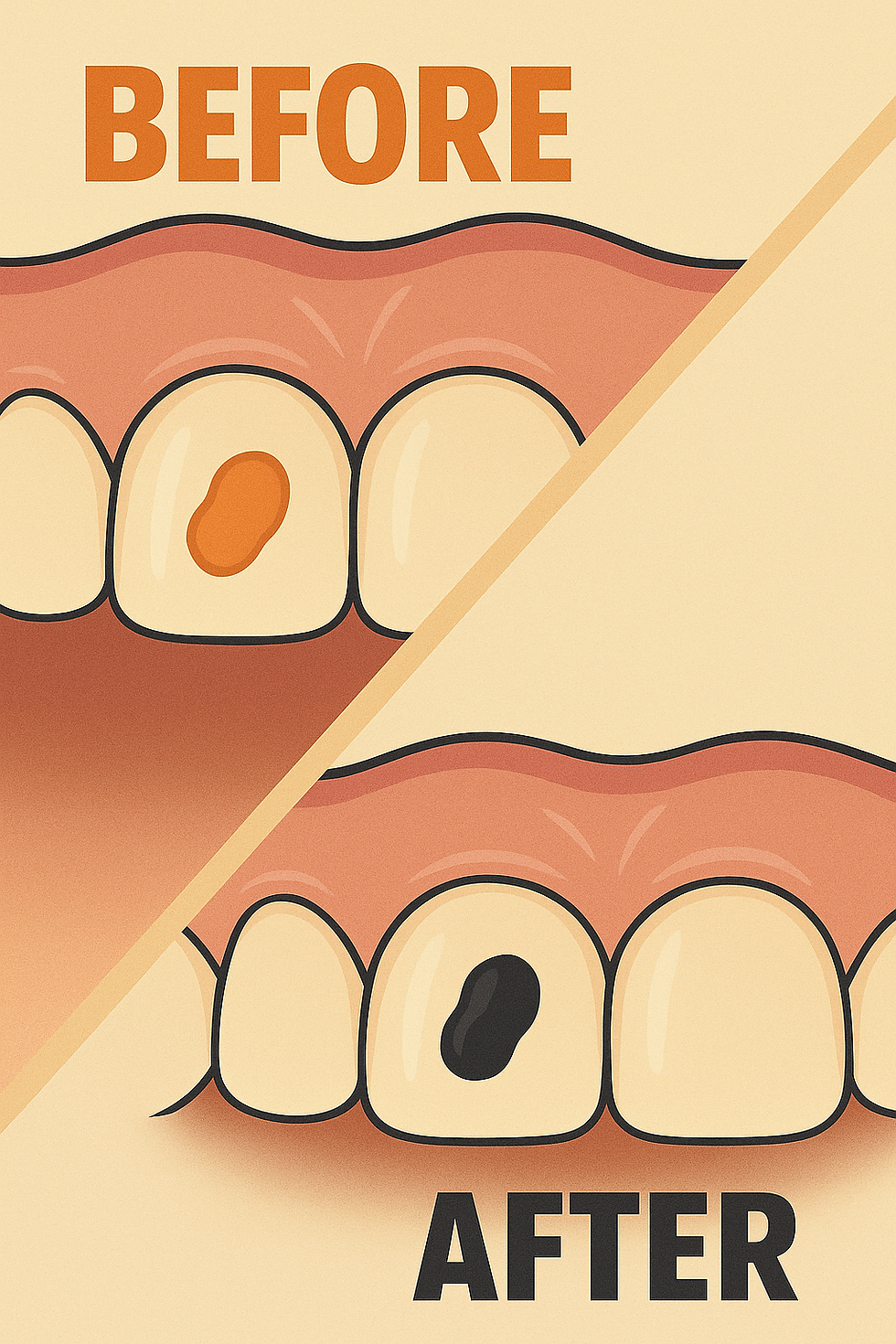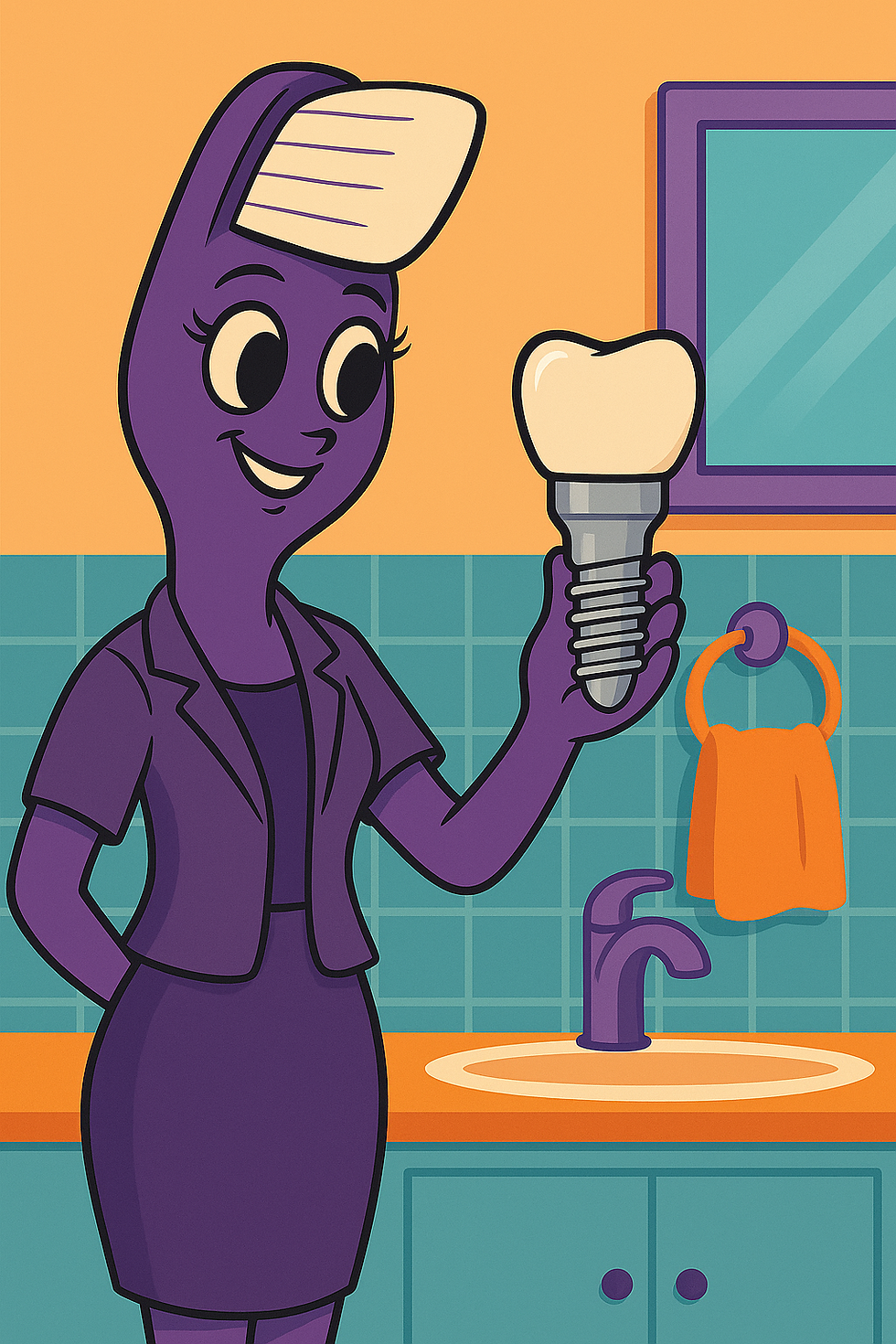Tooth Truth: The Magic (Black) Dot – What’s the Deal with SDF?
- naytoghlo
- May 7, 2025
- 3 min read
Updated: May 7, 2025

Silver Diamine Fluoride—SDF if you’re feeling friendly—is the dental world’s version of a potion. It looks like water, but don’t be fooled. A single drop can stop a cavity in its tracks. No drilling. No freezing. Just a little black spot that says, “Decay ends here.”
If you’ve left your dental appointment with a darker tooth and a raised eyebrow, you’ve likely met SDF. Let’s clear up the mystery.
What is SDF?
SDF is a liquid that combines silver (antibacterial hero) with fluoride (the tooth’s mineral BFF). Together, they team up to arrest cavities—especially in cases where traditional fillings are either too aggressive, too invasive, or just not realistic.
It’s not new. It’s just finally getting the attention it deserves, and for good reason.
When We Use It
Wiggly kids with big feelings.
For children who aren’t quite ready for traditional treatment, SDF offers a calm, drill-free option. A dab of liquid, a little drying, and we’re done. No tears, no needles.
Patients with special needs.
For patients who have cognitive, sensory, or physical challenges, SDF can make dental care less overwhelming and more accessible.

Those sneaky cervical lesions.
When decay shows up at the gumline (that CEJ—cementoenamel junction—zone), it’s often a pain to restore without irritating the gums or removing more healthy tooth structure than we’d like. SDF works wonders in these areas, especially when paired with great oral hygiene and monitoring.
Medically complex or elderly patients.
When someone can’t tolerate a long appointment, or the risks of traditional treatment outweigh the benefits, SDF is a gentle, effective option.
Why We Love It
It’s quick, painless, and non-invasive.
It stops decay and kills cavity-causing bacteria.
It buys us time—sometimes a lot of time—before a filling is needed.
It’s tooth-conserving. We keep the structure intact.
It works well in community care and outreach settings.
Why It’s Not for Everyone
It stains decay black.
Let’s say it again louder for the people in the back: SDF turns cavities black. It doesn’t stain healthy tooth structure, but if you’re hoping for invisible magic, this might not be it—especially on front teeth.

It’s not a filling.
SDF halts decay, but it doesn’t rebuild what’s lost. Sometimes we use it as a placeholder. Other times, we layer a tooth-colored restoration overtop later.
It needs follow-up.
We want to make sure the decay stays inactive, and that your brushing game stays strong.
The Tooth Truth Takeaway
SDF isn’t a cure-all, but it’s a brilliant tool when used in the right situation. It’s dentistry that meets people where they are—whether that’s a busy toddler, a medically vulnerable elder, or someone who just needs a breather from the drill.
And if your tooth leaves with a black dot, know that it’s a badge of honor. A sign that we chose preservation over excavation. Function over fuss.
Want to learn about how specialists use SDF in everyday dentistry? Check out this article from Oral Health Group, where a prosthodontist shares how SDF fits into a restorative workflow—yes, even in a crown-and-bridge kind of world.
Questions? Curious if it’s right for you or your family? Let’s chat. We’re here for the magic—and the science—behind every smile.



Comments